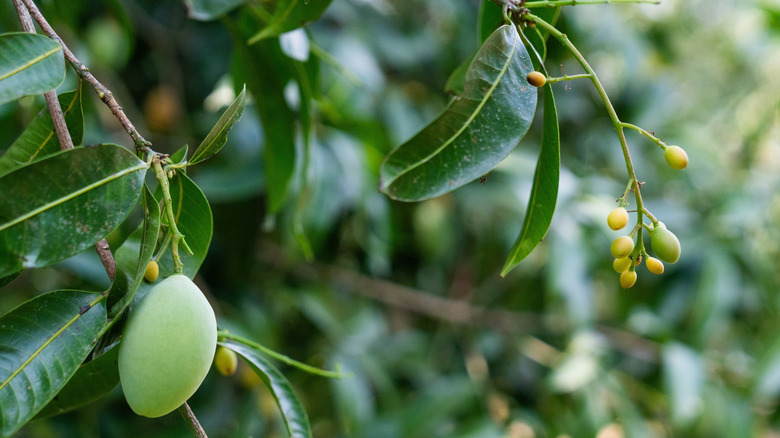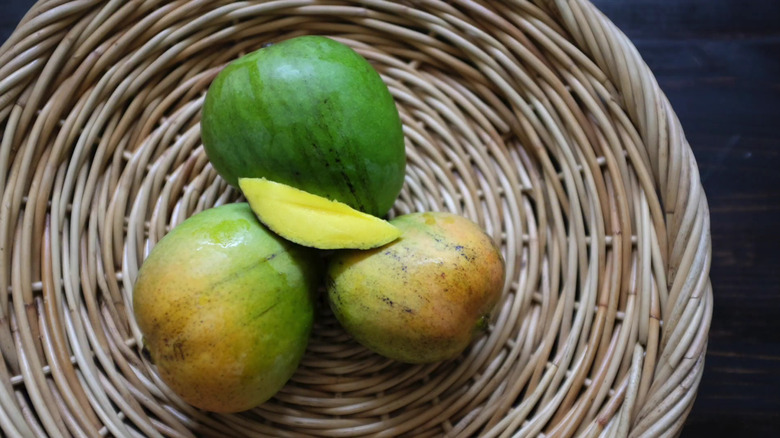The Small Mango Tree Variety You Can Grow Indoors For Spring Fruit
Mangoes are one of those fruits that you can never get enough of. Their delectable, tropical flavor goes so well with almost everything, and they can be used in both sweet and savory culinary delights. But what if you could grow your own small mango tree indoors and harvest a few spring fruits to savor? This could be one to add to your collection of indoor fruit trees you can harvest all year round. Although mangoes are traditionally grown in tropical regions where the trees can soar to enormous heights and the branches drip with tantalizing fruits, there are some dwarf cultivars suitable for growing in containers. One of these is the ice cream mango (Mangifera indica 'Ice Cream'). As long as you provide it with optimum conditions, there's no reason why you can't grow this hybrid indoors and reap a few of those delicious fruits.
This particular cultivar is one of numerous delicious varieties of mango trees and part of the Condo series, bred specifically for growing in containers. It's a dwarf plant that can be maintained at a height of 6 feet. The fruits on this compact tree are sweet and creamy with a greenish-yellow color when ripe. The flesh is fiberless with a thick skin that comes away easily. To grow this lovely tree indoors, you'll have to give it enough warmth and light to harvest some of its divine fruits.
How to grow an ice cream mango indoors
To ensure your mango tree grows well indoors, start with a fairly young one so that it will be able to adapt to its environment. Make sure you choose a large pot that's at least 20 inches in both diameter and depth to give the roots plenty of room to grow. Place your tree in the sunniest spot you can find, such as a south-facing window, as it needs around 8 to 10 hours of sunlight daily. But for it to produce fruit, you're probably going to need a grow light. Alternatively, if you have a bright balcony or patio area, you should move it outdoors during the day when the weather is warm and the sun is shining.
You also want to ensure that you water whenever the top two inches of soil feel dry, remembering to let the excess drain away. The other important aspects to monitor are heat and humidity. Your tree will flourish in temperatures above 70 degrees Fahrenheit with a humidity level over 50%. Misting daily will help with this. Although mango trees aren't heavy feeders, as you're growing in a pot, you'll want to give it a balanced fertilizer in its first year of growth and then switch to one that's higher in potassium to encourage the tree to fruit. Only feed during the warmer months and stop feeding during winter when the tree is dormant. Finally, once you're harvesting fruits, don't waste those skins because these food scraps can be used to fertilize your garden.

